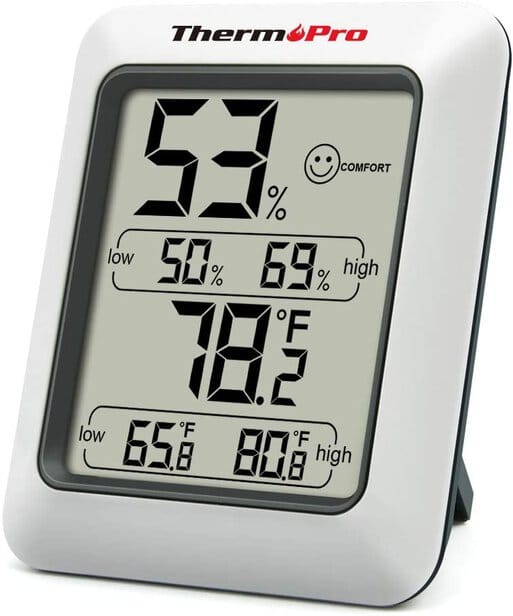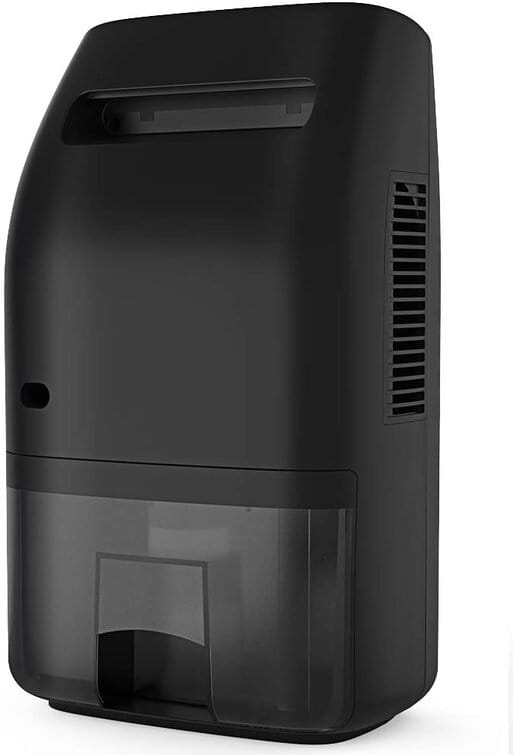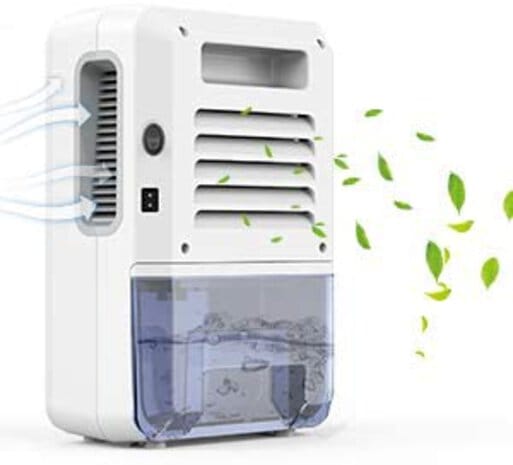Dealing with Humidity on a Boat
The SE US ‘enjoys’ high humdity levels, and by enjoys, I mean it makes it so you don’t want to put the convertible top down, ride a motorcycle, or generally just be outside when humidity levels are up. Thankfully, it’s not for huge lengths of time, but there are definitely at least 2 months or so where humidity, moreso when combined with hotter temperatures, makes life a bit miserable being outsdie for extended periods of time unless actually in the water.
Of course, we have a new HVAC unit for when we’re in the cabin at the slip, but moisture has a way of wrecking things and while we ‘could’ run the HVAC around the clock at a higher-than usual temperature setting, I power off and cut breakers and power for everything non-essential when not physically on the boat…as well as considering marine HVAC units are expensive enough, so I’d prefer to not potentially escalate or quicken any time to needed repair on it.
Talking to someone at the marina who had just replaced their older Sundancer’s CruiseAir with a Dometic, he had a good idea when I was asking if he ran the HVAC when not onboard - he leaves a dehumidifer running instead of the AC. Considering the relative (huge) price difference, it seemed like a pretty good idea, so I dug into checking out options
First things first - let’s measure it!
As most marin HVAC units don’t have a humidity readout, I wanted one, even if just for occasional reference. Inexpensive ones can be had pretty easily, so considering prices, sizes, and reviews, I went with a ThermoPro TP50.
This one is battery powered and reasonably thin, so a command strip or piece of velcro on the backside makes it easy to put up on the breaker panel door above the kitchen galley. It does record record high and lows - something worthwhile when not at the boat routinely, IMO.
One item to note - when compared to the display unit for the HVAC, both temperature readings are within around 5*F of each other - more than I’d expected, but it’s also possible it’s due to their positioning. I’ll eventually grab my HVAC thermometer to see if they’re both right, both wrong, or what - but it’s reasonably good enough for now.
Dehumidifier Options
HVAC units also dehumidify the air as a natural by-product of cooling the air. However, most modern standalone dehumidifiers, at least the portable ones, use Peltier technology AKA Thermo-electric. The short version of this is electricity is used to induce a temperature difference across a Peltier module, which causes one side of the module to heat up and the other to cool down, while drawing in air to feed to the ‘cold-side’ heat sink, which causes condensation from the humid air, which is then run off into a drain pan or line.
A fan not unlike a typical computer fan is used to move the air, and as a result - in general, the units are pretty reliable, with few components to break down, and - they are also quiet.
This makes them good for small room use, but note they are not as effecient as compressor-based dehumidifiers.
Note that I have yet to find any DC-powered units which I would consider to be worthwhile on a boat, although I’d love to be happily surprised there in the future….so assume you’ll need to leave at least one outlet powered when away from the boat - which I find an acceptable compromise versus for example, leaving the HVAC and sea pump running.
Square foot coverage
Most models will have a few specifications worth taking note of - including square footage.
As usual, some of these ratings may be optimistic, but considering the cabin size of most small cabin cruisers, doing some rough math of 7-9’ wide (inside dimensions) * (maybe 6 foot v-berth area + 6 foot kitchenetter/galley + 4 foot mid-berth) we wind up around somewhere around 144 square feet + head area, so let’s round up allowing for optimism on the behalf of manufacturers and say we’re looking for something in the area of 200-300sf of coverage. This puts is pretty well within the realm of most portable Peltier style devices.
Removal rate + tank sizes
Many of the offerings don’t specific an exact number on how much moisture can be removed per day. In reality, they generally remove milliliters in comparison to pints of compressor-based units, but in general, higher removal rates/day are better.
Tank sizes - if you intend to be away from the boat for longer periods of time, you’ll want a larger tank, or possibly a unit that has a drain hose to run into your galley or head sink. Lower-priced units tend to have smaller tanks, but sometimes you’ll find some unit claiming high numbers of extraction rate, which seems good - followed by a tiny tank.
Once the tank fills up - the unit will shut off
Many of the offerings don’t specific an exact number on how much moisture can be removed per day. In reality, they generally remove milliliters in comparison to pints of compressor-based units, but in general, higher removal rates/day are better.
Tank sizes - if you intend to be away from the boat for longer periods of time, you’ll want a larger tank, or possibly a unit that has a drain hose to run into your galley or head sink. Lower-priced units tend to have smaller tanks, but sometimes you’ll find some unit claiming high numbers of extraction rate, which seems good - followed by a tiny tank.
Physical size and location
It doesn’t hurt to plan out where the unit will sit, both when away from your boat, and where you’ll store it when underway. If you have some specific locations in your head - best to measure in advance of the purchase, although many of the units have non-standard or incomplete dimensions :-/
Which one to choose?
I went back and forth on a small number of units for a bit, mostly trying to find a larger tank with reasonable performance. One thing you may start to notice is units looking nearly identical to unknown other brands - but at different prices.
In the end, the unit I chose, an Afloia 2L tank unit, looks suspiciously similar to several others with the same shape, but for a few less $.
I’ve listed this unit along with a few others I was considering - some a bit cheaper but with smaller tanks or fewer reviews.
Here’s another search if you’d like to drive yourself a bit nuts as I did comparing too many of them.. ;)
So how well does it work?
Reasonably well.
The tank will fill up in the humid summers here in a bit over a week, so I’m glad I went with the largest tank I can find.
At least on this unit, the ‘shut-off’ is really just a float that rises in the tank to hit a cutoff switch, so I’ve now tried running it without the tank installed but sitting in the galley sink.
It is quiet, but I wish it were a bit shorter, which would allow me when on the boat, to stow it under the V-berth table insert (we leave the bed made up).


